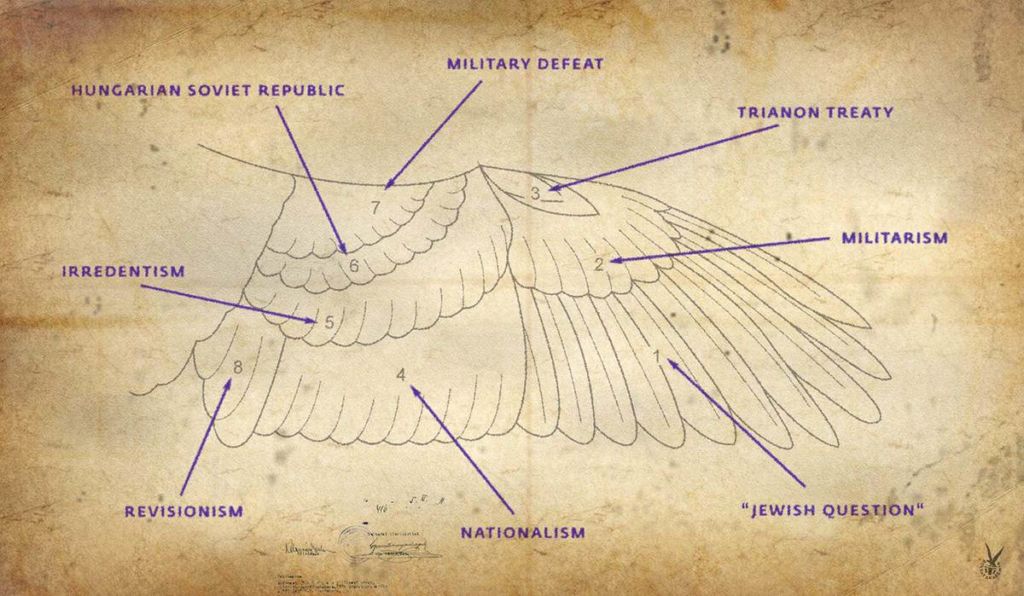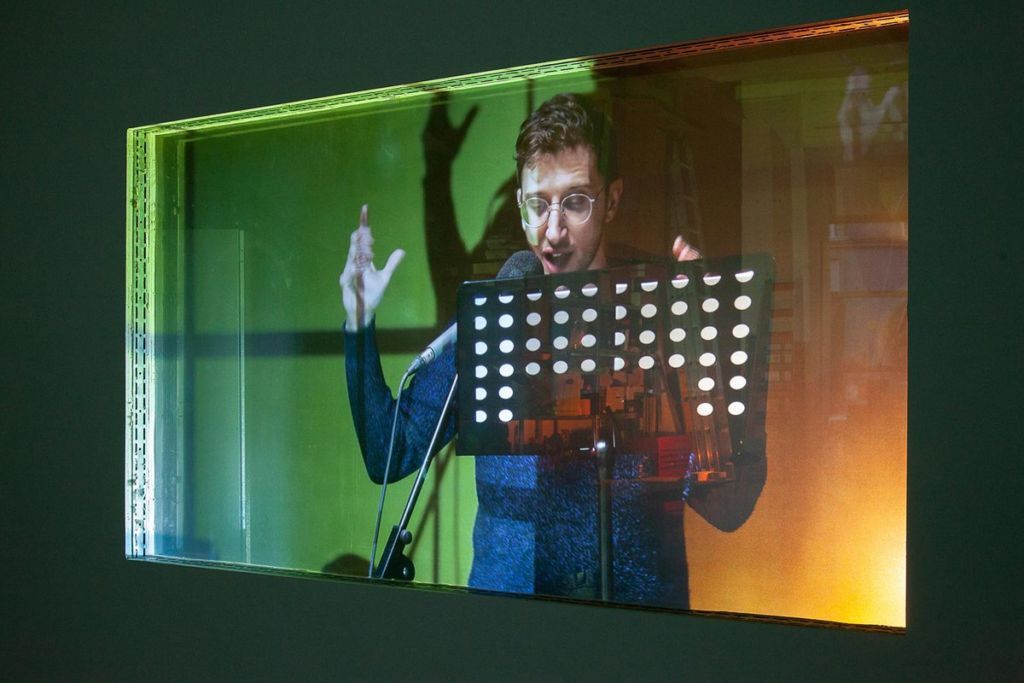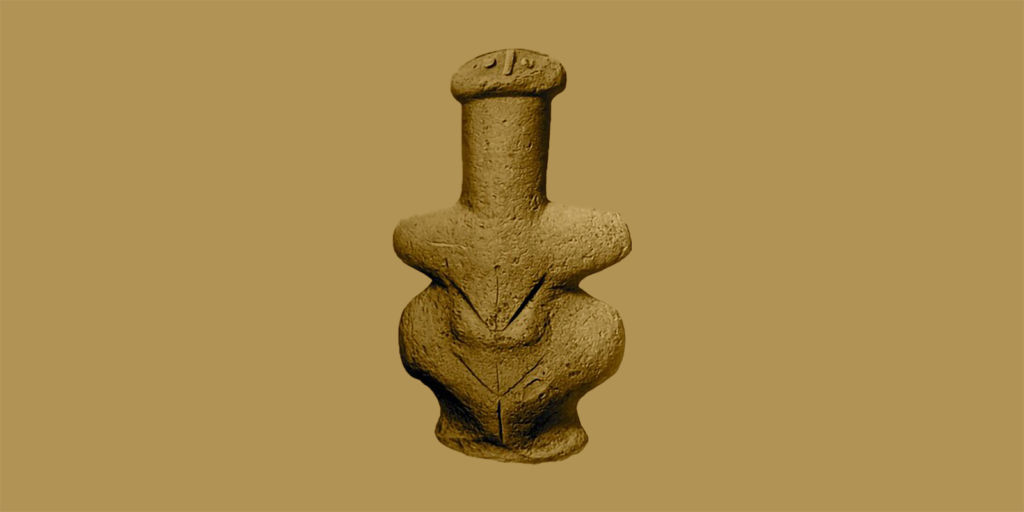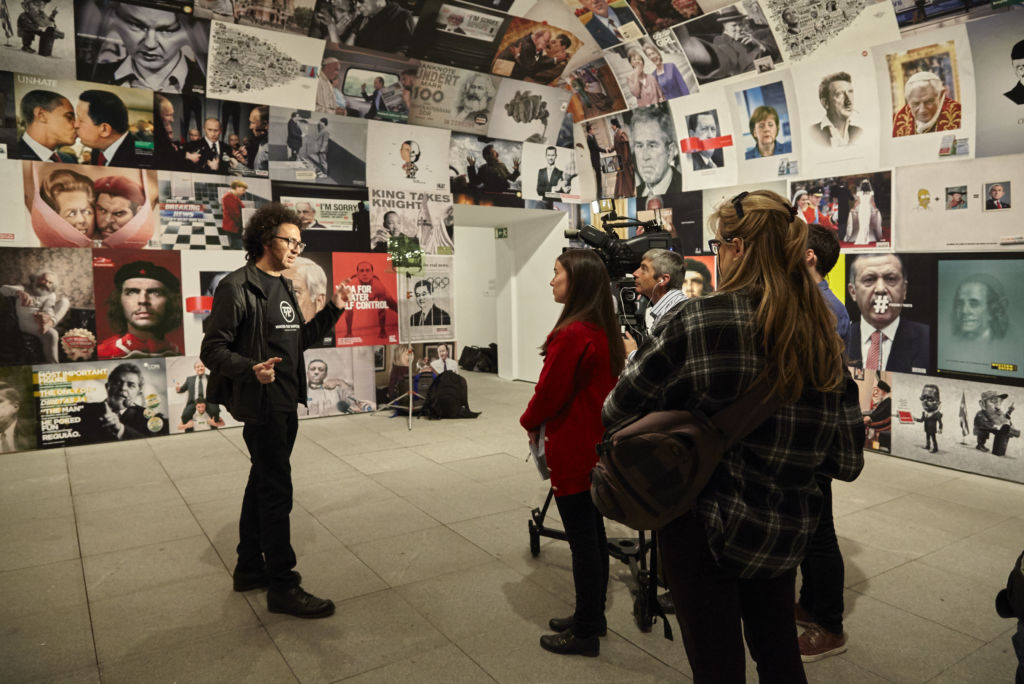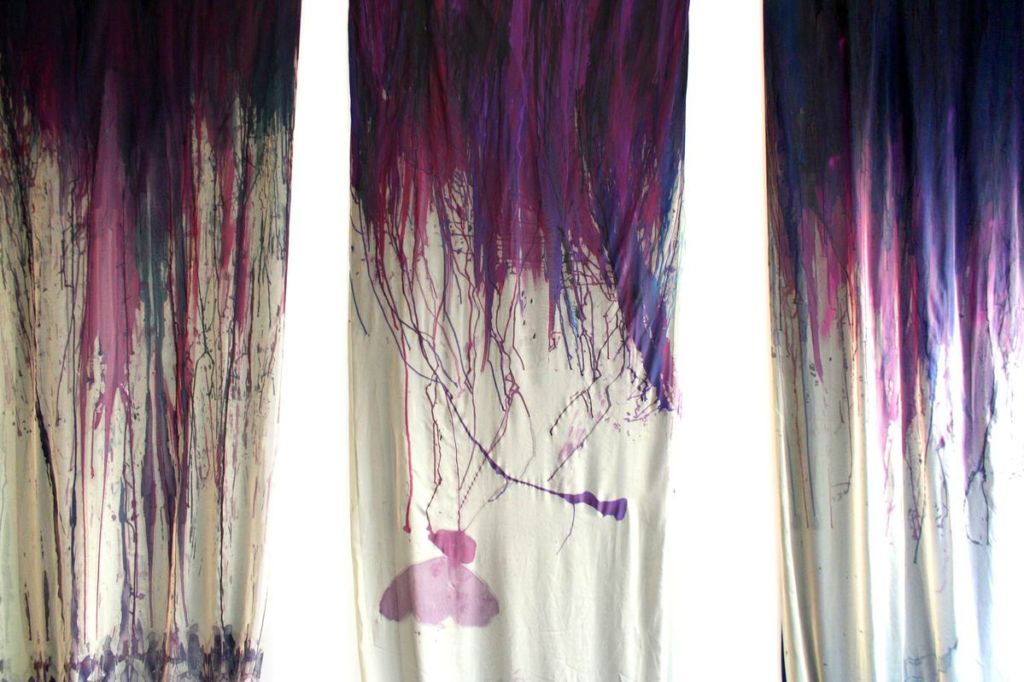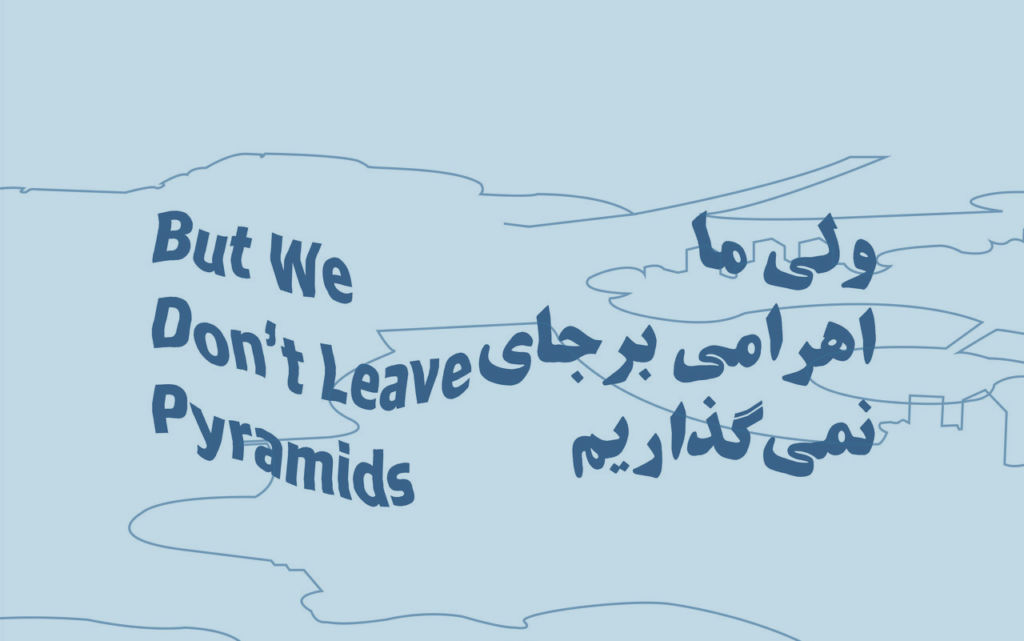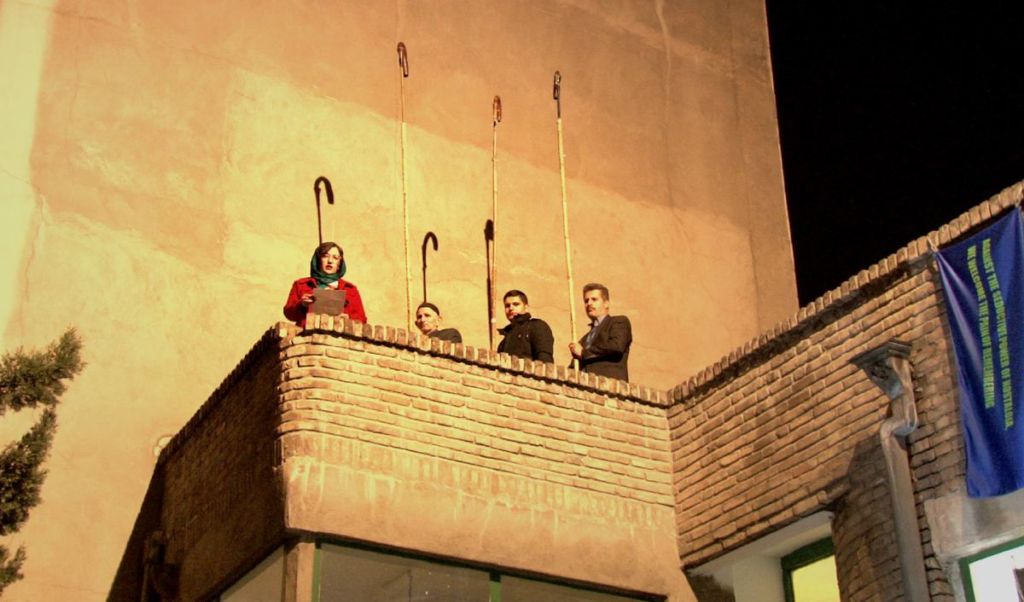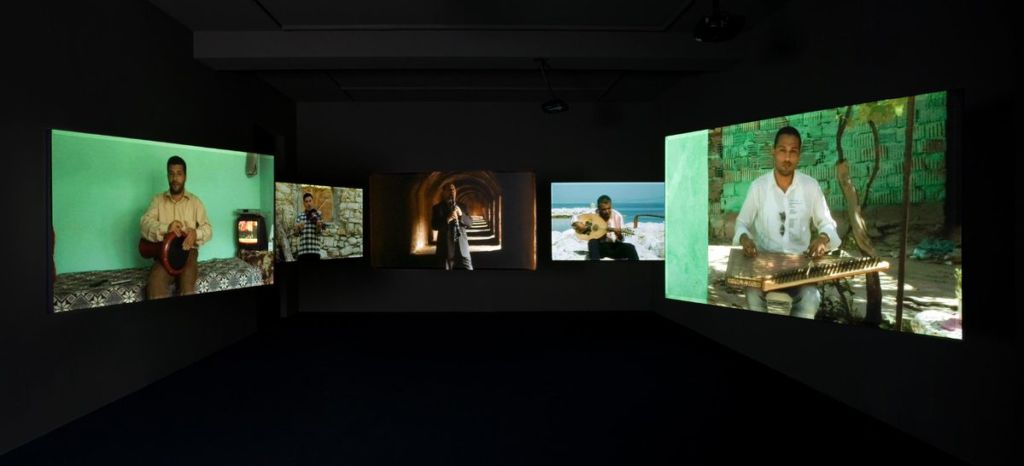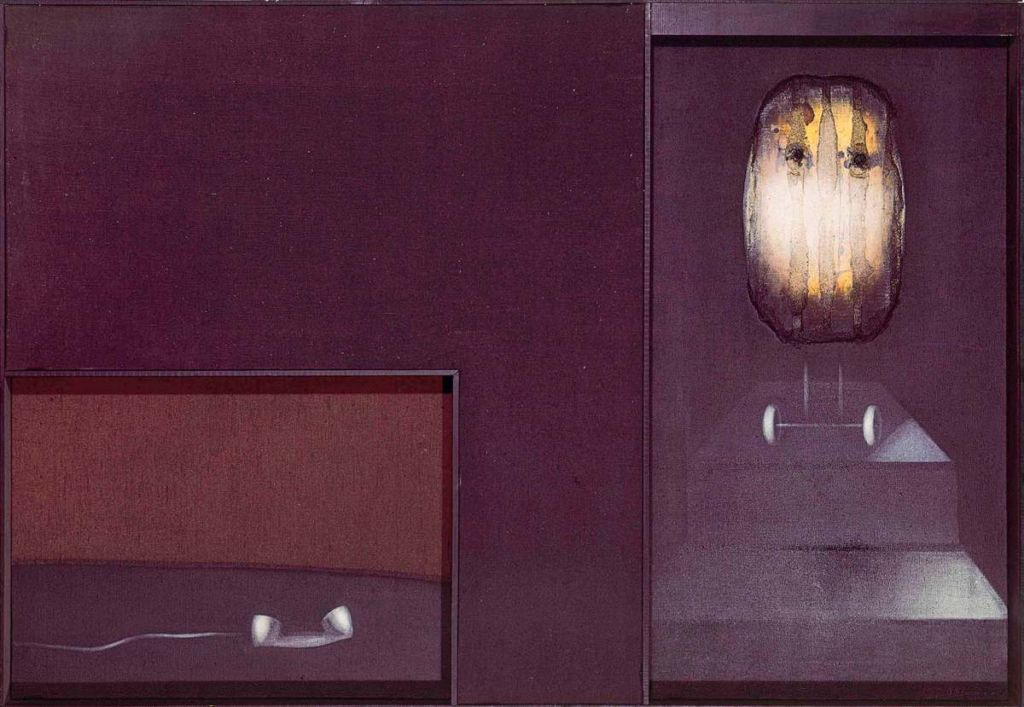Current social movements opposing work and employment conditions are not lacking “spectacularity”. But the panache of these collective protests cannot eclipse more subdued forms of opposition. Sleeping, dreaming, taking breaks or even playing constitute micro-resistances to the brutality of work, as certain artists have been showing us for several decades. Although the visibility of these revolts is negligible, this does not weaken their efficiency: on the contrary, they can be seen as the introduction of a kind of agency into the heart of a hard-working day-to-day life.
Maurizio Lazzarato, Marcel Duchamp et le refus du travail ; suivi de Misère de la sociologie, Paris, Les Prairies ordinaires, 2014.
Valerie Mainz and Griselda Pollock (eds.), Work and the Image II: Work in Modern Times, Aldershot, Ashgate Publishing, 2000.
David Smith, Voltron, 1962, Yvonne Rainer, Carriage Discreteness, 1966, and Stuart Brisley working at a factory on Hille Fellowship Poly Wheel in 1970, as part of the Artist Placement Group programme.
Lazzarato, Marcel Duchamp et le refus du travail, op. cit., p.9.
Henri-Pierre Roché, “Souvenirs sur Marcel Duchamp”, La Nouvelle Revue Française, June 1953.
Lazzarato, Marcel Duchamp et le refus du travail, op. cit. p.19.
Valerie Mainz and Griselda Pollock (eds.), Work and the Image II: Work in Modern Times, op. cit., p.1.
See the current state of research in these fields with the study day held in Paris in December 2017, entitled “Conflicts, Resistances and Tensions in the Worlds of Work”, organized by the ENS and the EHESS, as well as the International Sociology of Work Days on the theme “Work in Struggles: Resistances, Conflictualities and Collective Actions”, held at the CNAM in July 2018.
Jonathan Crary, 24/7: Late Capitalism and the Ends of Sleep, London, Verso, 2013.
Georges Duby, Armand Wallon (ed.), Histoire de la France rurale, vol. III, Apogée et crise de la civilisation paysanne, 1789-1914, Le Seuil, 1976, p.326.
Linda Nochlin, “L’Image des femmes au travail (1978-1999)”, in Fabienne Dumont (ed.), La rébellion du Deuxième Sexe. L’histoire de l’art au crible des théories féministes anglo-américaines (1970-2000), Dijon, Les Presses du réel, 2011, p.207.
Edward Palmer Thompson, Temps, discipline du travail et capitalisme industriel, trans. I. Taudière, Paris, La Fabrique, 2004.
Sophie Calle, Les Dormeurs, Arles, Actes Sud, 2000.
Jean-Max Colard, “Les Dormeurs”, Les Inrockuptibles, 30 November 2000: http://www.lesinrocks.com/cinema/films-a-l-affiche/les-dormeurs/.
Crary, 24/7, op. cit., p.121-122.
Lazzarato, Marcel Duchamp and the Refusal of Work, semiotext(e), p.5.
Mladen Stilinović, a presentation of his pieces on work, undated, https://mladenstilinovic.com/works/10-2/.
Kasimir Malevitch, La paresse comme vérité effective de l’homme (1921), Paris, Allia, 1999, p.15, p.34.
Mladen Stilinović participated in his first group exhibition in 1977 on the occasion of the 10th Biennale de Paris. See his artist biography by his Paris gallery, https://drive.google.com/file/d/0B-ehqcjgq7B5WGxGc2hqS0ZYSFU/view.
See Nicolas Feodoroff’s introduction on the occasion of a screening of the film at the FIDMarseille : https://www.fidmarseille.org/index.php/fr/?option=com_content&view=article&layout=edit&id=568.
Florence Weber, Le Travail à-côté. Une ethnographie des perceptions, Paris, Éditions de l’EHESS, 2009.
See the artist’s website: https://www.adrianmelis.net/dream-production-plan.
See particularly Véronique Dalmasso and Stéphanie Jamet-Chavigny, Regards sur le sommeil, Paris, Le Manuscrit, 2015.
Giorgio Agamben, “What is the Act of Creation”, in The Fire and the Tale, Stanford, Stanford University Press, 2017, p.41.
See William S. Smith, “Revolution and/or Sleep”, published in Triple Canopy, 16 May 2017: https://www.canopycanopycanopy.com/issues/21/contents/revolution-and-or-sleep
Anson Rabinbach, The Human Motor. Energy, Fatigue and the Origins of Modernity, Berkeley, University of California Press, 1992, p.44.
Anne Dufourmantelle, Intelligence du rêve. Fantasmes, apparitions, inspiration, Paris, Payot & Rivages, 2012, p.20, p.166.
2 October 2017: the Nobel Prize in Medicine is awarded Jeffrey C. Hall, Michael Rosbash and Michael W. Young. It recognizes the three American researchers’ work on circadian rhythms. This scientific term designates what is ordinarily referred to as the biological clock, or the daytime and night-time behaviour of the cells of living beings. Their work highlighted the fact that cells react differently to medical treatments depending on the time of day they are administered, whether it is day or night. This research builds upon studies showing that disturbances to the standard twenty-four-hour cycle are detrimental to the health of any living being.
Although other equally vital research had been done in the fields of cancerology and immunology, the Swedish Academy chose to single out these particular researchers, who had pointed out the importance of respecting biological rhythms and the time reserved for sleep. It can be seen as significant that this work on sleep, which has been developed since the 1970s, is being recognised in 2017. It testifies to, and stems from, not only the influence that neoliberalism had on the pace of work in the final decades of the twentieth century, but also the capitalist conception of work more generally over the past two centuries.
The 1970s: in the United States, new management methods are developed in the corporate world, no longer emphasising collective responsibility, but instead stressing the individual and his or her isolated performance. At the beginning of the 1980s, also in the United States: there are notable advances in research on circadian rhythms. End of the Glorious Thirty: neoliberal policies are implemented in the English-speaking world, with Europe starting to follow suit in the 1990s. The contemporaneousness between this research and the advance of neoliberalism could very well evince the emergence of a “sleep problem”. Just as work was not conceptualised prior to the development of capitalism, little importance was attached to sleep. Therefore, to the idea that “it was only with the advent of ‘capital’ that work was conceptualised, dissected and analysed from every angle1.”, one could add that sleep research would never have been awarded the Nobel Prize without neoliberalism, nor could it have become an entry point for artistic criticism of the world of work.
The site of a debate
The work motif cuts across all art currents2 and it gets updated according to the ideological and political contexts in which it arises. A first clue to explaining this renewed interest in work and the ways in which it is challenged can be found in texts by art historians who base their studies on the material turn movement. Recent works by Federica Martini provide an example: the idea of contributing to an “alternative vision of how art history deals with the inscription of artefacts in the realm of high and low culture”, and “a reading of potential art historical narratives through the lens of working-class studies and the contemporary material turn”, underpin her case study of the production of three works of contemporary art in an industrial context in the 1960s3. Especially as these works benefitted from the contribution of new materials and technologies available in those years, and should be understood in light of the new working class from which they emanated, in light of its struggles and of artists’ involvement in the industrial production of their works.
A second explanatory clue can be found in the sociology of art: Maurizio Lazzarato stressed that “the artist [is the] prototype of new workers who have become entrepreneurs of themselves4”. This status precisely materializes one of the major concerns of Marcel Duchamp, who made it a point of honour to make good “use of his time5” as a way of resisting the emergence of the profession of artist. Although Duchamp quickly became an artist’s artist, admired for the liberality of his practice, his ethos, detached from material contingencies, did not thrive among subsequent generations. “Like every other activity, art is caught up in the social division of labour6”, as demonstrated by the entrepreneur-artist figure that Lazzarato cites as an example. Finally, according to art historians Valerie Mainz and Griselda Pollock in their collective book Work and the Image, work constitutes “the real and symbolic site of exploitation, political resistance, as well as of social identity and self-definition7”. The materiality of works of contemporary art, artists’ involvement in production, their index value as labour that has become human capital, and the inherent symbolic and critical value of work make up a special motif of opposition to the exploitation of time for labour.
Reasons for refusal
Drowsiness, distraction or the mere stopping of work do not immediately come to mind when one thinks of ways of protesting work. The history of art has made us more accustomed to the spectacular manifestations of a working world in revolt. But in the work of some contemporary artists, one detects an interest in these relatively discreet forms of disobedience, echoing fields of research that have recently opened up in the history and sociology of work8. Of course, fits of working-class rage have not disappeared from the contemporary iconography. Works by Allan Sekula (Waiting for Tear Gas, 1999-2000) and Jean-Luc Moulène (Les Objets de grève, 1999-2003) simply give more room to thought that is sensitive to the gradual extension of work-time to the detriment of sleep-time, which was believed to be uncompressible.
Can the sleep motif in contemporary pieces that explore work be seen as relaying criticism of the streamlined allocation of time to labour? According to art critic Jonathan Crary in his essay 24/7: Late Capitalism and the Ends of Sleep—which combines analyses from the perspectives of sociology, art and film—sleep is the last resistant object of capitalist thought. It is much-coveted, and is presented as the last bastion against the mechanisation of living beings and the loss of freedom9: sleep is where the subject’s incommensurability is expressed. Crary’s book lays important conceptual foundations to begin reflecting on the effects of individuals being available around the clock, seven days a week. If the films of Chris Marker, Jean-Luc Godard and Ridley Scott provide a glimpse of the topic of resistance through sleep, many other works of art summon sleep as a sign of dysfunction in the world of work.
Portrayals of sleep
This interaction between work and sleep in art has its own history. To get a glimpse of it, we can look at the example of four well-known works from the second half of the nineteenth century: La fileuse endormie by Gustave Courbet (ca. 1853), La Sieste by Jean-François Millet (1866), Repasseuses by Edgar Degas (1884-1886) and The Siesta [after Millet] by Vincent Van Gogh (1889-1890). These works show labourers sleeping or yawning at work. In these paintings, the suspension of productive activity seems to be incorporated into (or is consubstantial with) the very notion of work. But in them, one does not get the sense that sleep has a rebellious function. For Millet and for Van Gogh, who borrowed the composition of Millet’s La Sieste, it was a matter of symbolizing rural France in the 1860s. Sleep plays an obvious role in the works of both painters. As Maurice Agulhon has pointed out, “the noontime nap makes it possible to regain one’s strength10”. These works, like many others that depict resting bodies, portray a relationship with time that, though it is being streamlined, is devoid of tension. The lack of any vision of conflict between rest-time and work-time is most evident in Repasseuses by Edgar Degas, which portrays one ironer at work and another in the middle of yawning. In Gustave Courbet’s painting—which depicts Acedia, an allegory of laziness—there even emanates a kind of sleeping-body sensuality, in the tender guise of a dozing spinner. Moreover, “the theme of the spinner or sleeping servant was generally interpreted as providing a simple scene in the realist genre11”, independent of any value judgement.
This nineteenth-century iconography tinged with tranquillity was revived by Tyler Coburn in his 2011 mural painting Professional Nonproducer. The artist modelled this work on Franz von Lenbach’s 1860 painting Hirtenknabe. Franz von Lenbach used the same vocabulary as his contemporaries, who offered a romanticised, nonchalant depiction of rural life. Von Lenbach once again took up the commonplace of a nap under the sun in a harvest landscape, the kind found with small variations in the works of Millet and Van Gogh. On the rural world, Marxist historian E. P. Thompson explains that “the working day lengthens or contracts according to the task – and there is no great sense of conflict between labour and ‘passing the time of day’12”. The fact remains that it does no justice to the working conditions of the time if they are depicted through the prism of otium. This is precisely the purpose of Coburn’s undertaking, which occupies a critical position in the tradition of the pastoral genre. In fact, Coburn did not reproduce von Lenbach’s painting himself. He had it reproduced by someone else, making the artist’s withdrawal a key element for understanding the work. He also borrows the designation codes of sleepers while naming his work not after the trade, but after the professional ability not to work. Thus he highlights the paradox of these types of representations, which, in their time, contributed to giving the bourgeois public an idle, charming vision of the condition of the labourer, one that was far removed from the real harshness of peasant work.
The fate of dreams
In the late 1970s, one started to see the emergence of pieces that analysed work beyond just the execution of gestures. Sleep occupied an implicit place in these, as the negative of work: it was set up as work’s “other”. This is true of the unique meeting of intimacies in Sophie Calle’s series The Sleepers—the intimacy of the artist who gives up her bed to others who sleep in it. The protocol of this photographic and narrative work was the uninterrupted “occupation of the bed” for the whole week that it took to produce the work. In April 1979, twenty-eight people were invited to come and sleep in the artist’s bed, in a continuous relay in three-eight time. Some sleepers were even paid to ensure the continuous occupation of the bed, like a babysitter called to replace a volunteer sleeper who had backed out13. The work took place during an odd period for the career of artist: in 1979, Sophie Calle was—unlike Duchamp’s “good use of time”—making good use of other people’s time14. In addition to interpreting The Dreamers as a work of intimacy, one could say that it is a work of sleep, in which sleep is the material and the sleepers are the assembly-line labourers.
The use of sleep in contemporary art inherits from surrealist symbolism just as much as it distances itself from this. André Breton, whom Jonathan Crary cites as one of the few twentieth-century artists to have drawn up a social defence of dreams, called for closer cooperation between work and dreams15. But whereas the surrealists’ dreams were collaboration tools, in the works of some contemporary artists of the last quarter of the twentieth century, dreams took on a subversive value. From this perspective, it was not unusual to see the brandishing of Paul Lafargue’s reference to The Right to Be Lazy (1880), paralleling Louis Blanc’s “right to work”. Marcel Duchamp was familiar with this text by Karl Marx’s son-in-law: “You can’t live without working, which is a terrible thing. I remember a book called The Right to Be Lazy: that right doesn’t exist now16.” Mladen Stilinović is one of those artists of the 1970s who made works advocating laziness. In the case of this Croatian artist—all of whose work is tinged with criticism of political and artistic institution, and of the world of work—labour, especially artistic labour, occupied an increasingly prominent place over the course of his career. The photographic series Artist at Work (1978) shows him sleeping or closing his eyes, daydreaming in a succession of poses that show no hint of any sort of production, aside from producing the refusal to do anything. The artist explained himself in one of his autobiographical texts:
“Why cannot art exist anymore in the West? The answer is simple. Artists in the West are not lazy. […] Artists in the West are not lazy and therefore are not artists but rather producers of something… […] Artists from the East were lazy and poor because the entire system of insignificant factors did not exist. Therefore they had enough time to concentrate on art and laziness. Even when they did produce art, they knew it was in vain, it was nothing17.
Duchamp and Malevich count among the artists of laziness whom Stilinović cites as modern references. Unlike Duchamp, who displayed a marked disinterest in politics, Malevich, in his essay Laziness as the Truth of Mankind (1921), embraced it in order to better accuse the socialist system of seeking to “put all of mankind to work”, and capitalism of “amass[ing] titles of laziness”18”. In the case of Stilinović, laziness proceeded not only from a game of political defiance rooted in the work of his elders in the first half of the twentieth century, but also from a defence of his working conditions as an artist when he began his career at the height of the Cold War19.
The motif of the dreamy artist, as seen in the work of Sophie Calle or Mladen Stilinović, is somewhat intended as a critique of working conditions. It was in the late 1960s that this underlying question of the professional status of artists (those “producers of something”, as Stilinović characterised them) seemed to be placed in the service of a broader critique of the way capitalism informs work throughout society. Some outstanding initiatives of that period testify to this, such as the Situationist International, the Artist Placement Group and the Art Workers’ Coalition.
Suspended doing
It is therefore to all of these periods of suspended action that some contemporary artists seem to be paying increasing attention—to what could be called the time outside of work-time, the minimal portion of non-utilitarian time left over after work. Just think of Duane Hanson, who created the installation Lunch Break in 1989. The work presents five realistic sculptures of men wearing work clothes: some of them are sitting or leaning, while another one is handling his things. In the case of one of the men in particular, who is rolling up a cable, the break does not seem to be treated as a moment of suspension, but rather one of aloneness. None of them is depicted in interaction with a fellow worker, neither vocally nor visually. These men seem not to belong to the same team, nor to have ever worked together. Among them, there seems to be no coherent, joint action: the different clothes, the co-presence of action and inaction in the same scene are so many clues indicating the strangeness of this work situation. Asynchronous and incapable as they are of taking a break together, they have become workers who can no longer even be appropriately described based on their job, so much does the blurring of temporalities seem to have gained the upper hand over their very existence. As for the Lunch Break filmed by Sharon Lockhart in 2003, it teaches us nothing about the jobs of each of the shipyard workers in Bath captured by the artist. That long 83-minute forward tracking shot filmed in slow-motion shows us forty-two workers taking a break, which is used for multiple activities: sleep, meals, reading and discussion. For them as well, the distinction between work-time and personal time no longer has any clear meaning. As critic Nicolas Feodoroff has said of them: “The workers no longer leave the factory. They are connected to it without sticking to it, enclosed the way an insect gets caught in an amber that still allows it to flutter a little”20.

Duane Hanson, Lunch Break, PVC, polychromic sculpture with oil, mixed media, accessories, 1989 © Duane Hanson

Sharon Lockhart, Lunch Break (film still), 35mm film transfered in HR, 83 minutes, 2003 ©Sharon Lockhart
Adrián Melis’s more recent works continue this exploration of the peripheries of work in the form of their sublimation into valuable things21. These works consist of research into forms that shed light on working conditions in Cuba, through dreams or lies. For Dream Production Plan for State-Run Companies in Cuba (2011-2014), Adrián Melis explored state-run companies that constitute “the areas that are most vulnerable to lack of productivity22”. He gives each employee a notebook in which they can record the dreams they have during siestas taken at their work stations. Instead of viewing these dozing periods as unproductive, the artist treats them as psychological productions: for this reason, each of the notebooks containing dreams is equipped with a wooden box that looks like commercial packaging. The dreams then appear to be products ready for the market. Although Melis’s project might at first glance seem similar to Breton’s desire to reconcile dreams and work, it is different insofar as other people’s dreams are the artist’s work material, and the fact of dreaming—rather than the content of dreams after the fashion of the surrealists—becomes a work product in itself. In the work The Value of Absence (2009-2010), the artist had previously documented another form of work avoidance by treating the act of calling in sick as his work material, with a view to exploring unproductivity and the improper use of work time. Wearied by the socialist system of production, employees of Cuban state-run companies do not hesitate to lie over the phone to avoid coming to work on certain days. The artist recorded their conversations and remunerated the absences they had thus justified by phone, as if it were work time. These works stress the idea that the time outside of work also deserves to be treated as work, even in an alternative form. Moreover, they reverse the neoliberal meaning of what work is, by bringing idleness into work, and not, as Crary put it, bringing work into all of life’s temporal interstices.
De-producing
Games might be the highest of these forms of avoidance. As a creative variation on straightforward opposition to work, they deprive the company’s time of its expected productive function. Midway between doing personal work on company time and Luddism, between production for oneself and revolt against others, they constitute, in the spirit of the installation Neoteny Institute for the End of Work (2017) by Gwenola Wagon and Stéphane Degoutin, one of the possible expressions of the refusal of contemporary work conditions. Shown for the first time at the 2017 Biennale Internationale Design Saint-Étienne, the installation presented a reconstruction of a work space devoid of humans, full of workstations, where indoor plants proliferated. The computer screens display videos of employees playing various games in which water bottles serve as rattles, rolling chairs as vehicles. The reversion to childhood correlates with and expresses the refusal to live a hard-working, demeaning adult life in open spaces that allow everyone watch each other’s idleness. Shot in 2011, John Wood and Paul Harrison’s video 10 x 10 revealed similar attitudes. From one scene to the next, printer paper became material for making paper airplanes, while the furniture changed place and formed different arrangements, each more playful than the last. This alteration of our relationship with work-time goes beyond just the time spent at the office, extending to everyday life as a whole, to its private times of rest, idleness and leisure.
These works testify to the “economicisation” of free, unproductive periods, to use the expression coined by André Gorz. They also give artistic expression to the “de-production” temptation—to borrow the concept developed by art historian Stéphanie Jamet-Chavigny—of which sleep, breaks or games are but a few variations23. The supreme attack on neoliberalism: Pierre Huyghe’s gesture in Dévoler (1995), in which, through a very brief action, he short-circuits the linearity of consumption relations, by going and placing an opened product for which he no longer has any use back on the shop shelf. Ceasing to produce, promoting stasis, reversing the mundane relationship to the world: there is disjunction in these works, a departure from the march imposed by work-time that includes no break, no space for reflexivity. Their seeds of subversion do not necessarily make them works devoid of poetry: they offer movements alternative to work that open up creative spaces. After all, these works are only meeting Giorgio Agamben’s definition of the act of creation, according to which the ability to not-do is precisely what makes it possible for art not to be simply reduced to a production: “the act of creation [is] a field of forces stretched between potentiality and impotentiality, being capable to act and to resist and being capable not to act and not to resist”24. Sleeping, dreaming, stopping and playing are but a few variants.
It has often been said of revolutions and revolutionaries that they had to be wide awake. From Martin Luther King proclaiming in 1966: “There is nothing more tragic than to sleep through a revolution”, to a protestor in Tahrir Square in 2011 telling the New York Times about how awake all of the protestors around him were, being awake appears to be the stimulant of protests25. Yet that same year, members of Occupy Wall Street attempted to reverse that very injunction to be awake. They bedded down on the streets of New York as a sign of revolt against the slavery of those Wall Street traders with no sleep or pastimes. It was proof of the recognition of the latent subversion that sleep conveys. The works of art mentioned here stem from this opposite view: they sketch and give shape to the limits to that technical obsession born in the industrial nineteenth century: the obsession with the body without fatigue. As historian Anson Rabinbach expressed it, “Behind the scientific and philosophical treatises on fatigue lurked the daydream of the late nineteenth-century middle classes—a body without fatigue26”. The fact that some of today’s artists are seizing upon the temporal vice that puts pressure on our presence in the world should be taken as a sign: a sign of the artwork-production pace that market rules are forcing upon artists, and a sign of work’s colonisation of time, which every individual is subjected to. It is in sleep, and more particularly in dreams, that it is possible to reappropriate time. On the subject of dreams, philosopher and psychoanalyst Anne Dufourmantelle spoke of “that extraordinary privilege of being […] outside of time but able to signify time”. She added: “You can drive people crazy by preventing them from dreaming. You can also save their lives by listening to their dreams in time”27. Sleeping, dreaming and setting up de-production spaces all constitute moments where the experience of time is made and founded, and where the freedom of the individual is ceaselessly played and replayed.
Translation by Emmelene Landon
Thanks to Laurence Bertrand Dorléac, François Quintin, Alexandre Monnin and Andrés Baron
Cover: Mladen Stilinović, Artist at work (extrait), 8 photos, black and white, 30 x 40 cm, 1978 ©Mladen Stilinović, with the courtesy of Museum of Modern Art, Warsaw.



